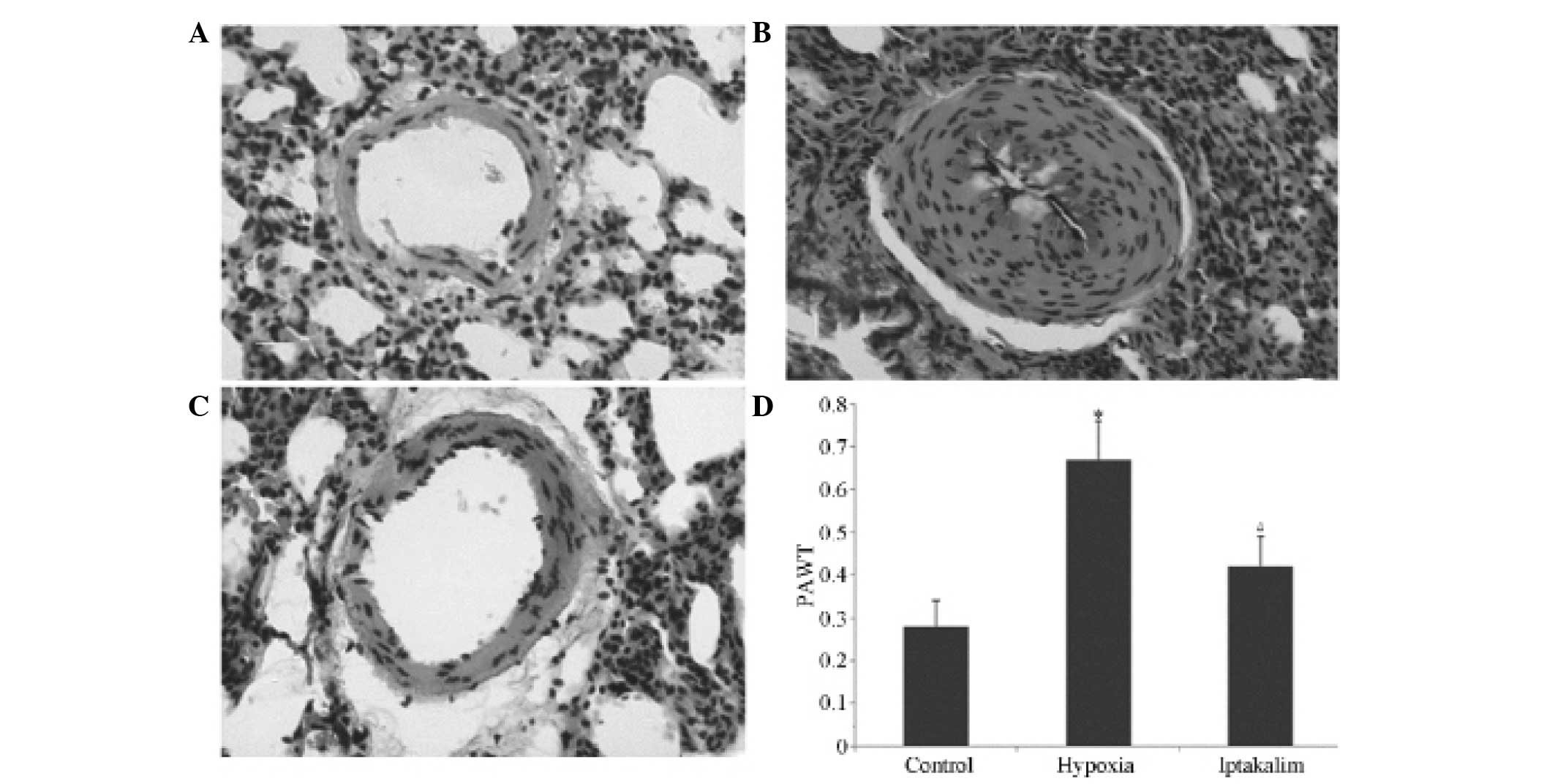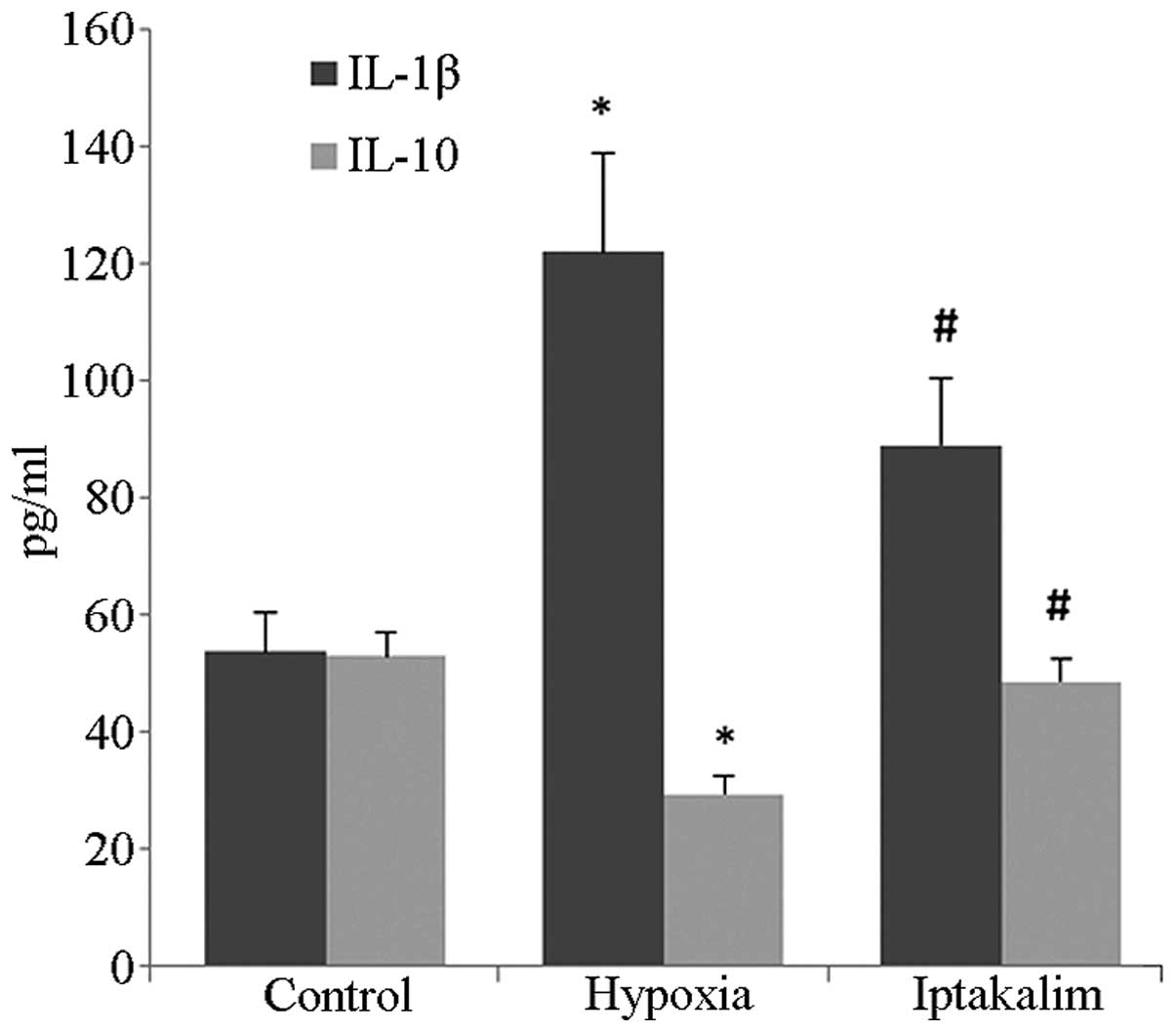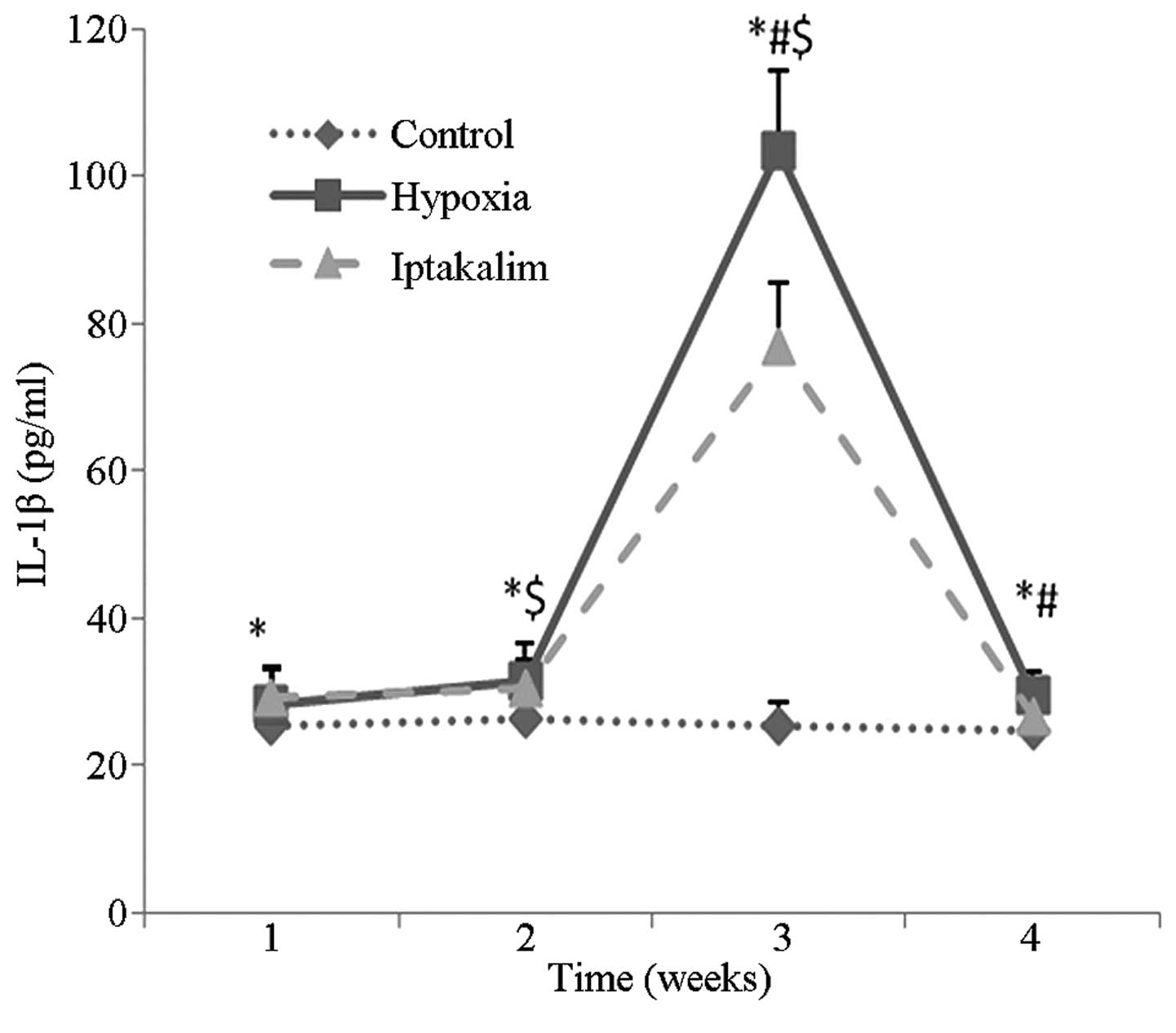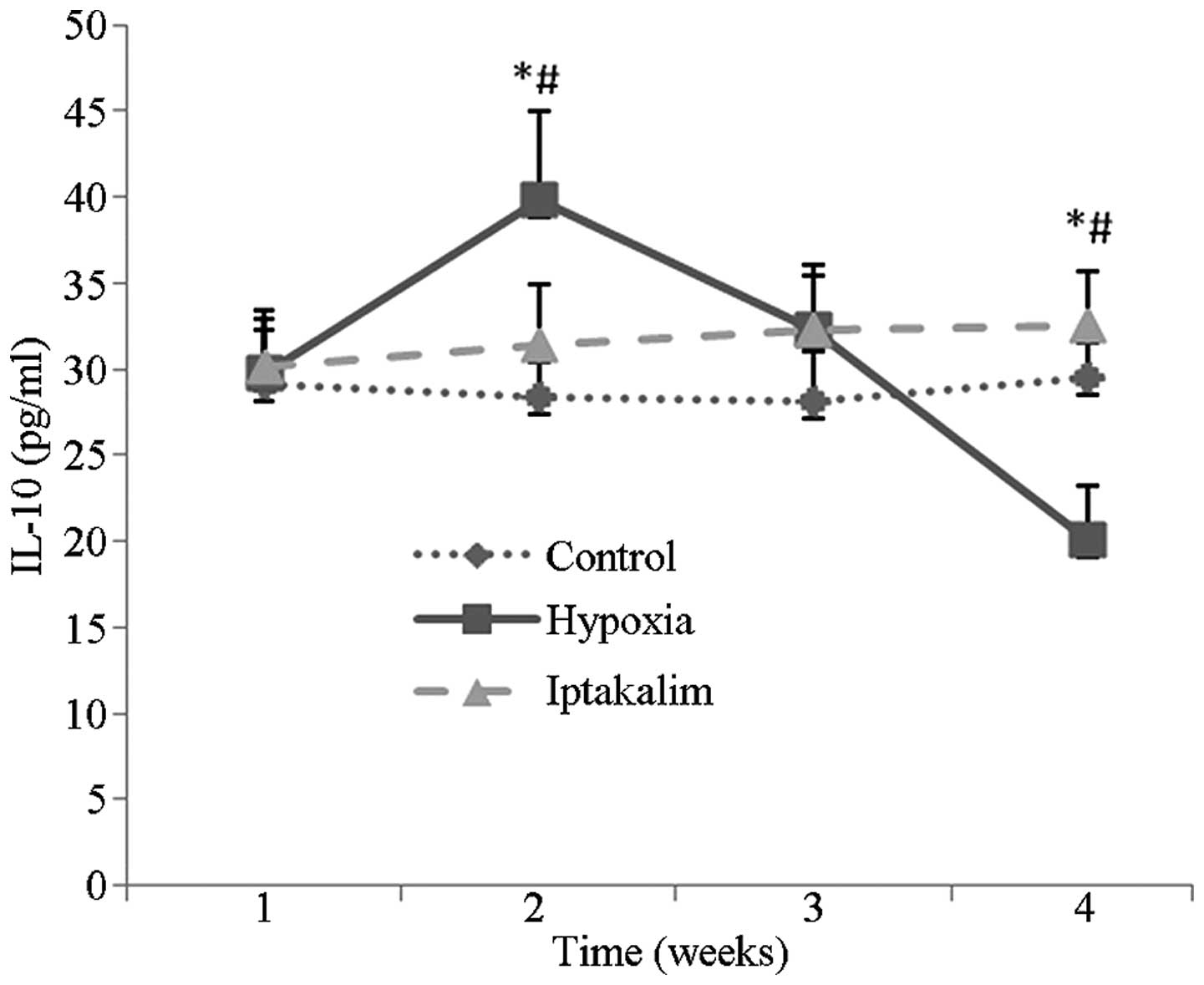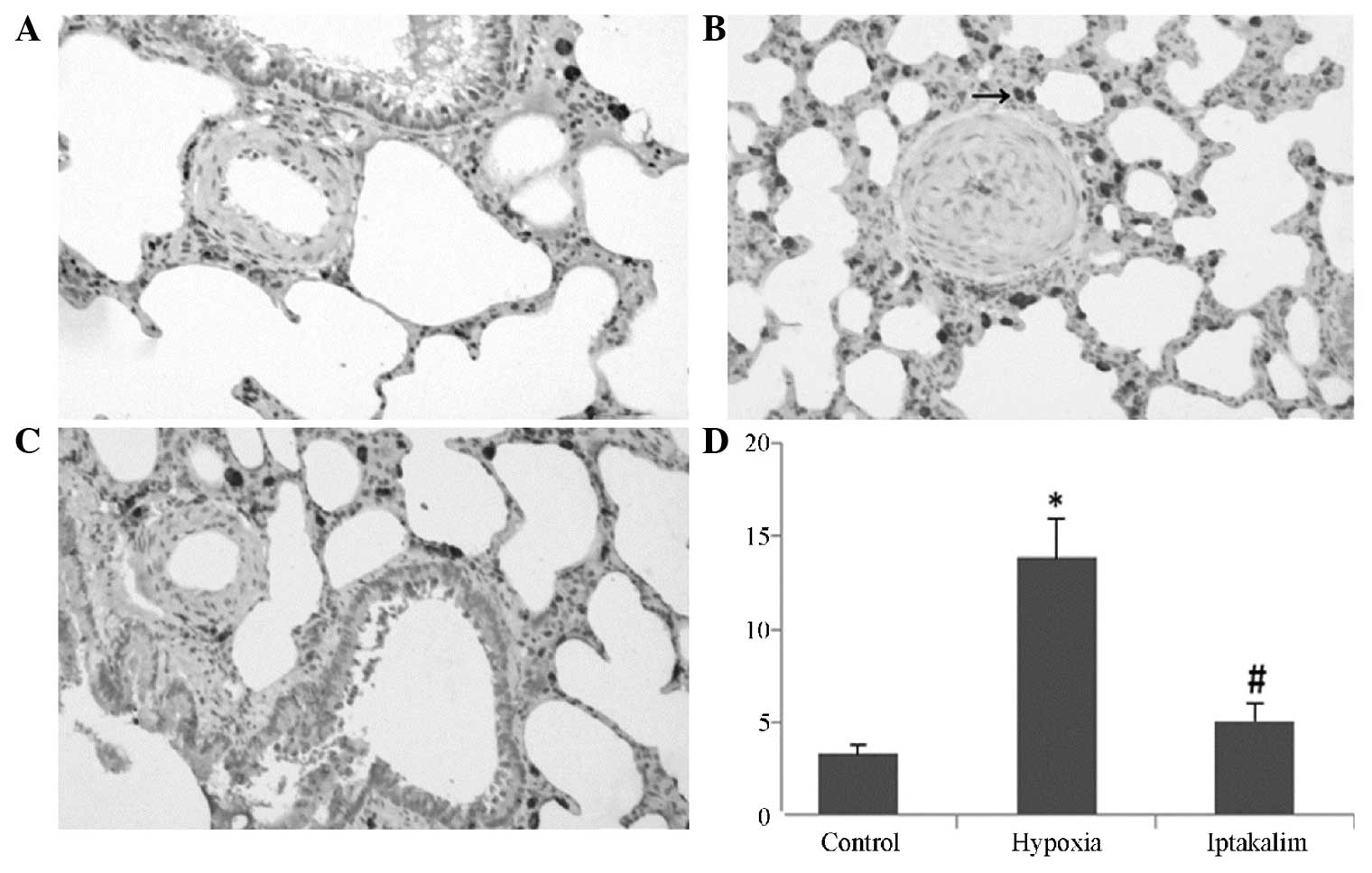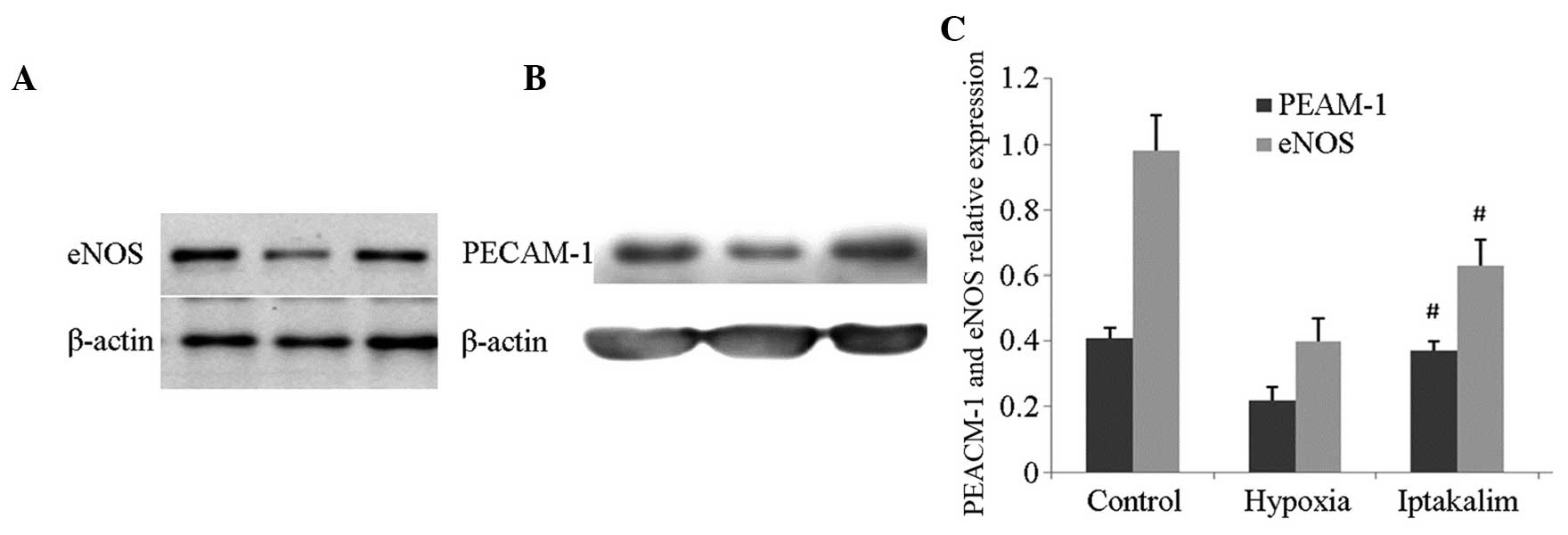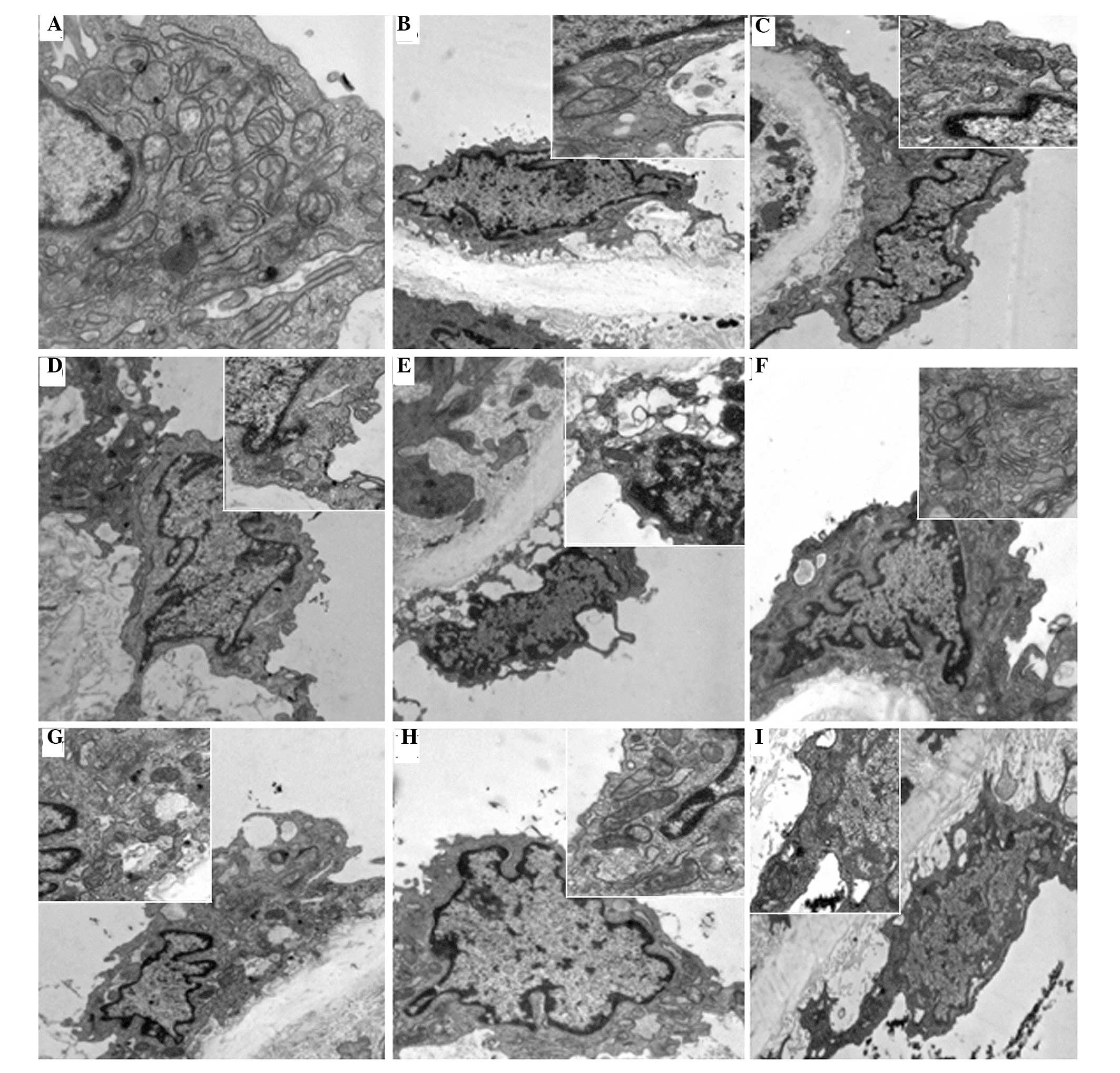|
1
|
Archer S and Rich S: Primary pulmonary
hypertension: a vascular biology and translational research ‘Work
in progress’. Circulation. 102:2781–2791. 2000. View Article : Google Scholar : PubMed/NCBI
|
|
2
|
Humbert M, Sitbon O and Simonneau G:
Treatment of pulmonary arterial hypertension. N Engl J Med.
351:1425–1436. 2004. View Article : Google Scholar : PubMed/NCBI
|
|
3
|
Böhm F and Pernow J: The importance of
endothelin-1 for vascular dysfunction in cardiovascular disease.
Cardiovasc Res. 76:8–18. 2007. View Article : Google Scholar : PubMed/NCBI
|
|
4
|
Csiszar A, Labinskyy N, Olson S, et al:
Resveratrol prevents monocrotaline-induced pulmonary hypertension
in rats. Hypertension. 54:668–675. 2009. View Article : Google Scholar : PubMed/NCBI
|
|
5
|
Hironaka E, Hongo M, Sakai A, et al:
Serotonin receptor antagonist inhibits monocrotaline-induced
pulmonary hypertension and prolongs survival in rats. Cardiovasc
Res. 60:692–699. 2003. View Article : Google Scholar : PubMed/NCBI
|
|
6
|
Firth AL, Mandel J and Yuan JX: Idiopathic
pulmonary arterial hypertension. Dis Model Mech. 3:268–273. 2010.
View Article : Google Scholar : PubMed/NCBI
|
|
7
|
Voelkel NF and Cool C: Pathology of
pulmonary hypertension. Cardiol Clin. 22:343–351. 2004. View Article : Google Scholar : PubMed/NCBI
|
|
8
|
Zhang B, Luo Y, Liu ML, et al: Macrophage
migration inhibitory factor contributes to hypoxic pulmonary
vasoconstriction in rats. Microvasc Res. 83:205–212. 2012.
View Article : Google Scholar
|
|
9
|
McNicholas WT: Chronic obstructive
pulmonary disease and obstructive sleep apnea: overlaps in
pathophysiology, systemic inflammation, and cardiovascular disease.
Am J Respir Crit Care Med. 180:692–700. 2009. View Article : Google Scholar : PubMed/NCBI
|
|
10
|
Savale L, Tu L, Rideau D, Izziki M, Maitre
B, Adnot S and Eddahibi S: Impact of interleukin-6 on
hypoxia-induced pulmonary hypertension and lung inflammation in
mice. Respir Res. 10:62009. View Article : Google Scholar : PubMed/NCBI
|
|
11
|
Yamaji-Kegan K, Su Q, Angelini DJ, Myers
AC, Cheadle C and Johns RA: Hypoxia-induced mitogenic factor
(HIMF/FIZZ1/RELMalpha) increases lung inflammation and activates
pulmonary microvascular endothelial cells via an IL-4-dependent
mechanism. J Immunol. 185:5539–5548. 2010. View Article : Google Scholar : PubMed/NCBI
|
|
12
|
Vergadi E, Chang MS, Lee C, et al: Early
macrophage recruitment and alternative activation are critical for
the later development of hypoxia-induced pulmonary hypertension.
Circulation. 123:1986–1995. 2011. View Article : Google Scholar : PubMed/NCBI
|
|
13
|
Wang H: Pharmacological characteristics of
the novel antihypertensive drug iptakalim hydrochloride and its
molecular mechanisms. Drug Development Research. 58:65–68. 2003.
View Article : Google Scholar
|
|
14
|
Zhou F, Wu JY, Sun XL, Yao HH, Ding JH and
Hu G: Iptakalim alleviates rotenone-induced degeneration of
dopaminergic neurons through inhibiting microglia-mediated
neuroinflammation. Neuropsychopharmacology. 32:2570–2580. 2007.
View Article : Google Scholar : PubMed/NCBI
|
|
15
|
Wang H, Long C, Duan Z, Shi C, Jia G and
Zhang Y: A new ATP-sensitive potassium channel opener protects
endothelial function in cultured aortic endothelial cells.
Cardiovasc Res. 73:497–503. 2007. View Article : Google Scholar
|
|
16
|
Gao S, Long CL, Wang RH and Wang H:
K(ATP) activation prevents progression of cardiac
hypertrophy to failure induced by pressure overload via protecting
endothelial function. Cardiovasc Res. 83:444–456. 2009. View Article : Google Scholar : PubMed/NCBI
|
|
17
|
Xie W, Wang H, Wang H and Hu G: Effects of
iptakalim hydrochloride, a novel KATP channel opener, on
pulmonary vascular remodeling in hypoxic rats. Life Sciences.
75:2065–2076. 2004. View Article : Google Scholar
|
|
18
|
Everett AD, Le Cras TD, Xue C and Johns
RA: eNOS expression is not altered in pulmonary vascular remodeling
due to increased pulmonary blood flow. Am J Physiol.
274:L1058–L1065. 1998.PubMed/NCBI
|
|
19
|
Megalou AJ, Glava C, Oikonomidis DL, et
al: Transforming growth factor-β inhibition attenuates pulmonary
arterial hypertension in rats. J Clin Exp Med. 3:332–340. 2010.
|
|
20
|
Qi X, Xie WP, Wang H and Hu G: Changes of
pulmonary arterial endothelial cells in chronic hypoxic rats and
intervention of iptakalim hydrochloride. Zhongguo Linchuang Kangfu
Zazhi. 9:94–96. 2005.In Chinese.
|
|
21
|
Rabinovitch M, Gamble W, Nadas AS,
Miettinen OS and Reid L: Rat pulmonary circulation after chronic
hypoxia: hemodynamic and structural features. Am J Physiol.
236:H818–H827. 1979.PubMed/NCBI
|
|
22
|
Dorfmüller P, Perros F, Balabanian K and
Humbert M: Inflammation in pulmonary arterial hypertension. Eur
Respir J. 22:358–363. 2003. View Article : Google Scholar : PubMed/NCBI
|
|
23
|
Kherbeck N, Tamby MC, Bussone G, Dib H,
Perros F, Humbert M and Mouthon L: The role of inflammation and
autoimmunity in the pathophysiology of pulmonary arterial
hypertension. Clin Rev Allergy Immunol. 44:31–38. 2013. View Article : Google Scholar
|
|
24
|
Humbert M, Monti G, Brenot F, et al:
Increased interleukin-1 and interleukin-6 serum concentrations in
severe primary pulmonary hypertension. Am J Respir Crit Care Med.
151:1628–1631. 1995. View Article : Google Scholar : PubMed/NCBI
|
|
25
|
Tsai BM, Wang M, Pitcher JM, Kher A,
Crisostomo P and Meldrum DR: Zaprinast attenuates hypoxic pulmonary
artery injury and causes less aortic relaxation than milrinone.
Shock. 24:417–420. 2005. View Article : Google Scholar : PubMed/NCBI
|
|
26
|
Nonaka-Sarukawa M, Okada T, Ito T, et al:
Adeno-associated virus vector-mediated systemic interleukin-10
expression ameliorates hypertensive organ damage in Dahl
salt-sensitive rats. J Gene Med. 10:368–374. 2008. View Article : Google Scholar : PubMed/NCBI
|
|
27
|
Ito T and Ikeda U: Inflammatory cytokines
and cardiovascular disease. Curr Drug Targets Inflamm Allergy.
2:257–265. 2003. View Article : Google Scholar : PubMed/NCBI
|
|
28
|
Chen S, Kapturczak MH, Wasserfall C, et
al: Interleukin 10 attenuates neointimal proliferation and
inflammation in aortic allografts by a heme oxygenase-dependent
pathway. Proc Natl Acad Sci USA. 102:7251–7256. 2005. View Article : Google Scholar : PubMed/NCBI
|
|
29
|
Mazighi M, Pellé A, Gonzalez W, et al:
IL-10 inhibits vascular smooth muscle cell activation in vitro and
in vivo. Am J Physiol Heart Circ Physiol. 287:H866–H871. 2004.
View Article : Google Scholar : PubMed/NCBI
|
|
30
|
Ito T, Okada T, Miyashita H, et al:
Interleukin-10 expression mediated by an adeno-associated virus
vector prevents mono-crotaline-induced pulmonary arterial
hypertension in rats. Circ Res. 101:734–741. 2007. View Article : Google Scholar : PubMed/NCBI
|
|
31
|
Rocha R, Martin-Berger CL, Yang P,
Scherrer R, Delyani J and McMahon E: Selective aldosterone blockade
prevents angiotensin II/salt-induced vascular inflammation in the
rat heart. Endocrinology. 143:4828–4836. 2002. View Article : Google Scholar : PubMed/NCBI
|
|
32
|
Sprague AH and Khalil RA: Inflammatory
cytokines in vascular dysfunction and vascular disease. Biochem
Pharmacol. 78:539–552. 2009. View Article : Google Scholar : PubMed/NCBI
|
|
33
|
Alan B and Nalbantgil S: Genetic, cellular
and molecular mechanisms of pulmonary arterial hypertension.
Anadolu Kardiyol Derg. 1:9–13. 2010. View Article : Google Scholar
|
|
34
|
Bauersachs J and Widder JD: Endothelial
dysfunction in heart failure. Pharmacol Rep. 60:119–126.
2008.PubMed/NCBI
|
|
35
|
Janigro D, West GA, Gordon EL, et al:
ATP-sensitive K+ channels in rat aorta and brain
microvascular endothelial cells. Am J Physiol. 265:C812–C821.
1993.PubMed/NCBI
|
|
36
|
Newman PJ: The biology of PECAM-1. J Clin
Invest. 100:S25–S29. 1997.PubMed/NCBI
|
|
37
|
DeLisser HM, Helmke BP, Cao G, et al: Loss
of PECAM-1 function impairs alveolarization. J Biol Chem.
281:8724–8731. 2006. View Article : Google Scholar
|
|
38
|
Goel R, Boylan B, Gruman L, North PE and
Newman DK: The proinflammatory phenotype of PECAM-1-deficient mice
results in atherogenic diet-induced steatohepatitis. Am J Physiol
Gastrointest Liver Physiol. 293:G1205–G1214. 2007. View Article : Google Scholar : PubMed/NCBI
|
|
39
|
Woodfin A, Viosin MB and Nourshargh S:
PECAM-1: a multi-functional molecule in inflammation and vascular
biology. Arterioscler Thromb Vasc Biol. 27:G2514–G2523. 2007.
View Article : Google Scholar
|
|
40
|
Goel R, Boylan B, Gruman L, Newman PJ,
North PE and Newman DK: The proinflammatory phenotype of
PECAM-1-deficient mice results in atherogenic diet-induced
steatohepatitis. Am J Physiol Gastrointest Liver Physiol.
293:1205–1214. 2007. View Article : Google Scholar
|
|
41
|
Ikarashi N, Toba K, Kato K, et al:
Erythropoietin, but not asialoerythropoietin or
carbamyl-erythropoietin, attenuates monocrotaline-induced pulmonary
hypertension in rats. Clin Exp Hypertens. 34:575–581. 2012.
View Article : Google Scholar : PubMed/NCBI
|
|
42
|
Chen K and Popel AS: Theoretical analysis
of biochemical pathways of nitric oxide release from vascular
endothelial cells. Free Radic Biol Med. 41:668–680. 2006.
View Article : Google Scholar : PubMed/NCBI
|




